|
|
Greetings everyone!
Our second Sea Notes issue of 2024 is packed once again. Our team has been quite busy publishing new research and gearing up for the field season. Much of our recent news is focused on protected resources including leatherback sea turtles, sawfish, and Rice's whales—including recent sightings of these whales in the western Gulf of Mexico!
I’m also proud to share some of our team’s accomplishments for improving Caribbean fisheries science and management. These include a highly successful strategic planning workshop with numerous partners to improve data collection and management in the region, and the first time the Marine Resource Education Program was held in St. Croix, U.S. Virgin Islands.
We also celebrated Earth Day and Earth Week in April, during which we reflected on the impacts of climate on fisheries. This is especially important in our region as we are already seeing many impacts of increasing water temperatures on our marine resources and ecosystems. Our teams are working hard to integrate these concerns into our research and monitoring efforts so we can better understand and plan for these effects into the future.
Speaking of a changing climate, the Climate Ecosystem and Fisheries Initiative (CEFI) held its first summit May 7-9, in La Jolla, California. The summit brought together 140 in-person participants and 100 remote participants from four NOAA Line Offices (Fisheries, Oceanic and Atmospheric Research, National Ocean Service, and the National Environmental Satellite, Data, and Information Service) and all U.S. ocean and coastal regions, including the Great Lakes! The CEFI Summit (1) affirmed the CEFI purpose, goals, and structure; (2) provided input on products, workflows, and timelines for CEFI system components; (3) strengthened collaborations; and (4) identified key next steps, including continued engagement with target audiences/users. By all accounts, the summit was a great success and we all look forward to expanding the collaborations that blossomed that week.
Looking ahead for this year, we’re excited to share updates on advancements in our science and surveys thanks to funding from the Inflation Reduction Act. Stay tuned for updates on all this and more on how we are working towards our mission of providing the scientific advice and data needed to effectively manage the living marine resources of the Southeast Region and Atlantic high seas.
Keep reading!
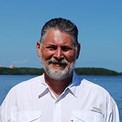 |
|
Thanks for your continued support and interest,
Clay Porch, Ph.D
Southeast Fisheries Science Center Director
clay.porch@noaa.gov
|
|
|
NOAA Fisheries research identifies what makes the best conditions for Rice’s whale habitat, and predicts where else these whales occur. |
|
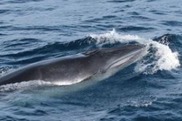 |
NOAA shark researchers are kicking off an international science initiative this month to tag up to 2,000 mature blue sharks off the coast of the United Kingdom. This study will help us learn about blue shark movement ecology in the eastern North Atlantic. |
|
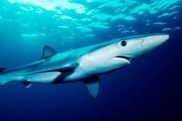 |
NOAA Fisheries initiated an emergency response effort with partners to attempt to rescue and rehabilitate smalltooth sawfish affected by a mortality event in South Florida. A sawfish rescued on April 12 unfortunately succumbed to its illness and died. This rescue attempt provides valuable information for next time. |
|
 |
Scientists from the Southeast Fisheries Science Center joined NOAA’s Office of Law Enforcement to enhance turtle excluder device (TED) inspections to protect sea turtles in the Florida Keys National Marine Sanctuary. |
|
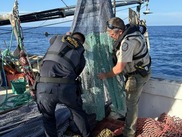 |
This report provides a "snapshot in time" of the status of our nation's fisheries at the end of 2023, including reductions in the number of stocks that are overfished and undergoing overfishing. A major regional highlight: three Gulf of Mexico stocks were removed from the overfishing list this year. |
|
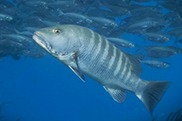 |
World Tuna Day highlights the global importance of sustainably managed fish stocks. At NOAA Fisheries, protecting tuna populations from overfishing while supporting these economically important fisheries is a daily priority. Our robust management system helps conserve these in-demand species while providing fishing opportunities. |
|
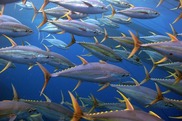 |
On April 11, 2024, NOAA Fisheries scientists had the rare opportunity to observe two Rice’s whales during aerial surveys in the western Gulf of Mexico. The whales were observed 55 nautical miles off the coast of Corpus Christi, Texas, where the water was approximately 224 meters deep. |
|
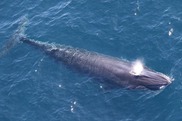 |
Extensive planning, data collection procedures, and teamwork are involved in the fall groundfish survey. Learn about the process of data collection onboard the aboard NOAA Ship Oregon II in this blog. |
|
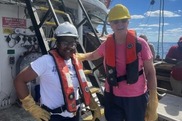 |
Science communication intern, Hannah Shahmoradi, gives us an inside look at the unique challenges and camaraderie of life at sea on research expeditions. |
|
 |
Leatherback sea turtles travel thousands of miles from nesting areas to feeding grounds. These locations—and the journey between them—are critical for supporting this species’ survival. New research provides evidence of critical feeding grounds for these turtles along the U.S. Atlantic coast. |
|
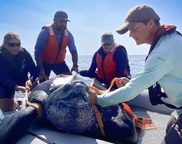 |
Inflation Reduction Act makes new funding available through NOAA Fisheries to conserve and recover endangered species. |
|
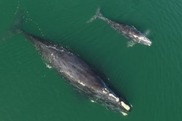 |
A 15-foot white shark found on a beach in the Florida panhandle provided scientists the rare opportunity to collect a “great” amount of white shark information. |
|
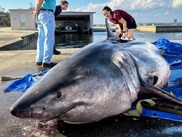 |
NOAA Fisheries hosted a strategic planning workshop with stakeholders in the U.S. Caribbean to improve the region’s fisheries science and management into the future. |
|
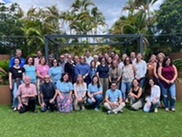 |
An update from our experts on the status of North Atlantic right whales, and our plans to use Inflation Reduction Act funds for right whale conservation. |
|
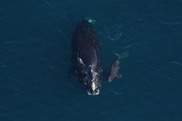 |
|
|
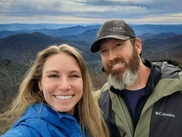 |
|
As part of the Faces of the Southeast Fisheries Science Center series, meet Meaghan Emory. |
 |
|
As part of the Faces of the Southeast Fisheries Science Center series, meet Kristin Hannan. |
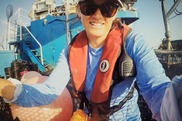 |
|
As part of the Faces of the Southeast Fisheries Science Center series, meet Erin Pickett. |
 |
|
As part of the Faces of the Southeast Fisheries Science Center series, meet Dr. Skyler Sagarese. |
 |
|
As part of the Faces of the Southeast Fisheries Science Center series, meet Joy Merino. |
|
|
Mark Your Calendar
-
Southeast Data, Assessment, and Review (SEDAR) Steering Committee Check-In Webinar – May 30, 2024 – Virtual (More SEDAR events)
-
Gulf States Marine Fisheries Commission Inflation Reduction Act Workshop: Validating Recreational Effort Estimates – June 4-6, 2024 – New Orleans, Louisiana
-
South Atlantic Fishery Management Council Meeting – June 10-14, 2024 – Daytona Beach Shores, Florida
-
Gulf of Mexico Fishery Management Council Meeting – June 24-27, 2024 – Houston, Texas
- Gulf of Mexico Fishery Management Council Standing, Reef Fish, Socioeconomic and Ecosystem Scientific & Statistical Committee Meeting – July 30-August 1, 2024 – Tampa, Florida
-
185th Caribbean Fishery Management Council Meeting – August 13-14, 2024 – St. Croix, U.S. Virgin Islands – Hybrid
- South Atlantic Fishery Management Council Scientific and Statistical Committee Meeting – August 15, 2024 – Virtual
|
|
|
The mission of NOAA's Southeast Fisheries Science Center is to provide the scientific advice and data needed to effectively manage the living marine resources of the Southeast region and Atlantic high seas.
Visit our website
|
|
|
|
|